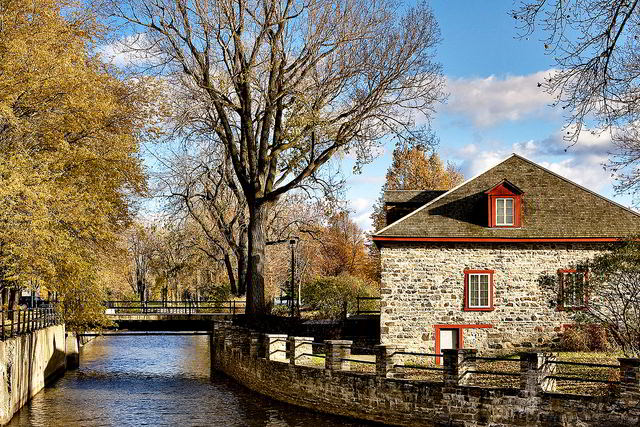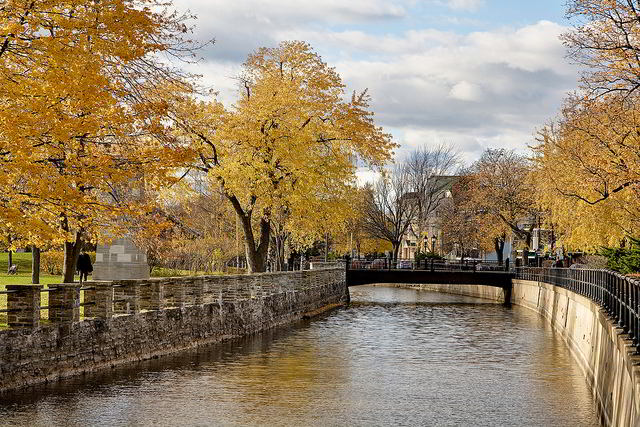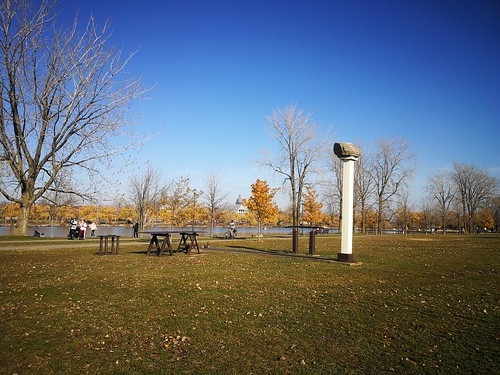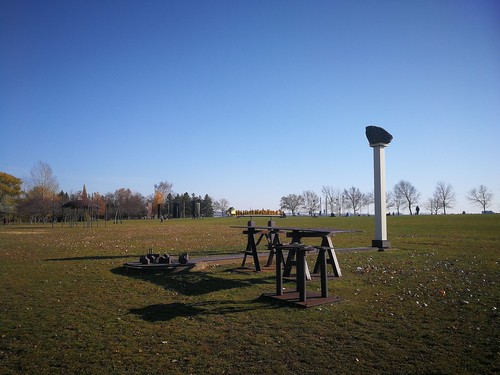Lachine Canal
Visit the Lachine Canal National Historic Site and learn about the important impact the Canal had on the early growth and development of Montreal

Today the Lachine Canal is a a picturesque waterway lined with green-space and multi purpose paths for strolling or cycling along its picturesque banks, however it wasn't always like this.
The Lachine Canal has a rich history and it played a vital role in the growth and development of Montreal. Contemplated as far back as 1689 as a means to allow ships to navigate past the dangerous Lachine Rapids, construction of the Lachine Canal did not start until 1821 and it first opened to vessels in 1825. The canal is 14 kilometres long and when first built it had 7 locks that were only 1.5 metres in depth. To accommodate the growing size of ships the canal was deepened and the locks were expanded in the 1840s and once again between 1873 and 1885.
The introduction of the canal helped fuel the early growth of the city. The canal provided hydraulic power along its banks which was used to power the increasing number of factories and industries along it's banks. With the opening of the Saint Lawrence Seaway in 1959 the Lachine Canal quickly lost its prominence and much of the industry along the banks relocated. By 1970 the canal was closed to all shipping traffic.
During the following decades the banks of the canal began to take on new life as work began on cleaning up the contaminants in the canal and new residential and commercial developments began to take shape. Many of the old warehouses and industrial buildings where turned into upscale lofts and condominiums and new neighbourhoods began to flourish. In 2002 the canal was reopened to pleasure craft helping breathe new life into the area. In spite of the improvements, relics of the past and older buildings that have been restored and re-purposed still help preserve the history of the site.
At the western end of the canal you will find the scenic Parc René-Lévesque located on a narrow peninsula that juts out into the Saint Lawrence River. In the same area Parks Canada also operates the Visitor Services Centre where you can learn more about the canal's 300 year history. Just a little farther west they operate the The Fur Trade at Lachine National Historic Site, a museum located in a circa 1803 stone warehouse used to gather furs during the fur trade. The visitor centre has free admission, however there is a small charge to visit the Fur Trade Museum.
Over 11 kms of pathways along the length of the Lachine Canal are ideal for those who enjoy walking or cycling. There are numerous BIXI Bike stations in close proximity to the eastern portion of the Canal which makes them a great option for exploring that portion without exceeding the 30 minute limit. In the winter months you can even enjoy cross-country skiing along the sides of the canal.
Nearby attractions: Olympic Park and Stadium and Biodome
Facts For Your Visit
Fee: No except to visit the Fur Trade at Lachine National Historic Site
Hours: Path is open year round every day from dawn to 11pm. The Fur Trade at Lachine National Historic Site which is open Summer only Mon-Sun 10am-5pm
Address: Extends from the Old Port of Montreal in the east to Lachine in the West, Montreal, Quebec
Official Website: Lachine Canal
Directions
| Metro Line | Nearest Station | Walking Time |
|---|---|---|
| Line 1 - Green | Station Charlevoix (Eastern Portion) or Station Angrignon (Western Portion) | 2 Minutes (Eastern Portion); Bus + 8 Minutes (Western Portion) |
How to get to Lachine Canal by Metro
By Metro: For the Eastern Portion of the canal the most convenient access is via Metro Line 1 to Station Charlevoix exit and proceed straight ahead (north) along Rue Charlevoix toward the green bridge. The canal is located at the bridge.
For the western end of the canal and the Visitors Centre take Metro Line 1 to Station Angrignon; exit and catch bus #195-O (West) at stop 54109 and take it to 6e Avenue at Saint-Louis. Exit and walk south on 6e Avenue to the canal. Go left for the Visitors Center of right to walk to the Fur Trade at Lachine National Historic Site. You can also take bus #110-O (West) to the stop at Saint-Patrick and du Musée and walk straight ahead to the Visitors Center. The #110-O runs a little less frequently, but drops you off closer to the visitor centre than the #195-O.
Map & Instant Route Finder
Click&Go Map and Route Finder with public transit, walking, driving or cycling directions. Get up-to-the-minute transit times for your route.
Accommodations near Lachine Canal:
Photo Gallery
-

Lachine Canal is beautiful in the Autumn cc licensed photo by abdallahh -

Photo Credit: art_inthecity - cc license via Flickr -

Photo Credit: art_inthecity - cc license via Flickr
Video
Please provide consent and/or disable ad blocker to view the video.



